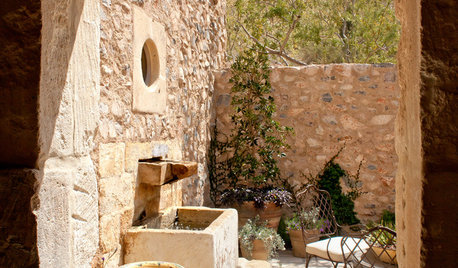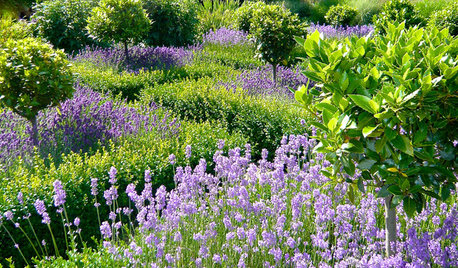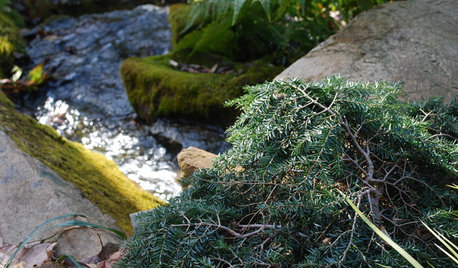Italian Cypress Dying
btdixon
13 years ago
Related Stories

RUSTIC STYLEKitchen of the Week: Found Objects and Old Italian Farmhouse Charm
A homeowner and her cabinetmaker create a personal version of European-inspired comfort and simplicity
Full Story
DECORATING STYLESSo Your Style Is: Tuscan
Bring the vitality and warmth of the Italian countryside to your home with Tuscan textures, colors and materials
Full Story
LANDSCAPE DESIGNBring a Touch of Renaissance Italy Into Your Garden
Italian gardens of the period are famed for their beauty. Here are classic design elements you can borrow for your own space
Full Story
GARDENING GUIDES4 Herb Container Gardens for Fabulous Global Cuisine
Tingle your taste buds with the unbeatable taste of fresh herbs in your Italian, Asian, Mexican or French fare
Full Story
DECORATING GUIDESGeorgian-Inspired Elegance Lives on in Today's Homes
Classical design from a bygone era gives today's homes beautiful proportions, subtle color palettes and decorative architectural features
Full Story
GARDENING GUIDESGreat Design Plant: Tsuga Canadensis ‘Bennett’
Bennett Canadian hemlock thrives in shade and provides sculptural interest in eastern U.S. gardens
Full Story
LANDSCAPE DESIGNThe Art of the Espalier
Go ahead, let limited garden space drive you up the walls. With these 6 ways to train plants vertically, it can be a beautiful thing
Full Story
DECORATING GUIDES'Dracula' Silk Wallpapers Prove a Feast for the Eyes
If you've been drinking in the NBC show's sumptuous sets, this scoop on that gorgeous silk wallpaper will hit the spot
Full Story
GREAT HOME PROJECTSHow to Get a Pizza Oven for the Patio
New project for a new year: Light a fire under plans for an outdoor oven and claim the best pizza in town
Full Story








brandon7 TN_zone7
ken_adrian Adrian MI cold Z5
Related Professionals
Towson Landscape Architects & Landscape Designers · Arden-Arcade Landscape Contractors · Brookline Landscape Contractors · Lakewood Landscape Contractors · New Providence Landscape Contractors · Palos Verdes Estates Landscape Contractors · Seminole Landscape Contractors · Baileys Crossroads Landscape Contractors · Linden Siding & Exteriors · Littleton Decks, Patios & Outdoor Enclosures · Miami Decks, Patios & Outdoor Enclosures · Morgan Hill Decks, Patios & Outdoor Enclosures · Quincy Decks, Patios & Outdoor Enclosures · West Bloomfield Township Decks, Patios & Outdoor Enclosures · Wheaton Decks, Patios & Outdoor Enclosuresken_adrian Adrian MI cold Z5
sirius1111
salicaceae
genesmasher
pineresin
genesmasher
pineresin
salicaceae
Blyss
Lisa Hodge